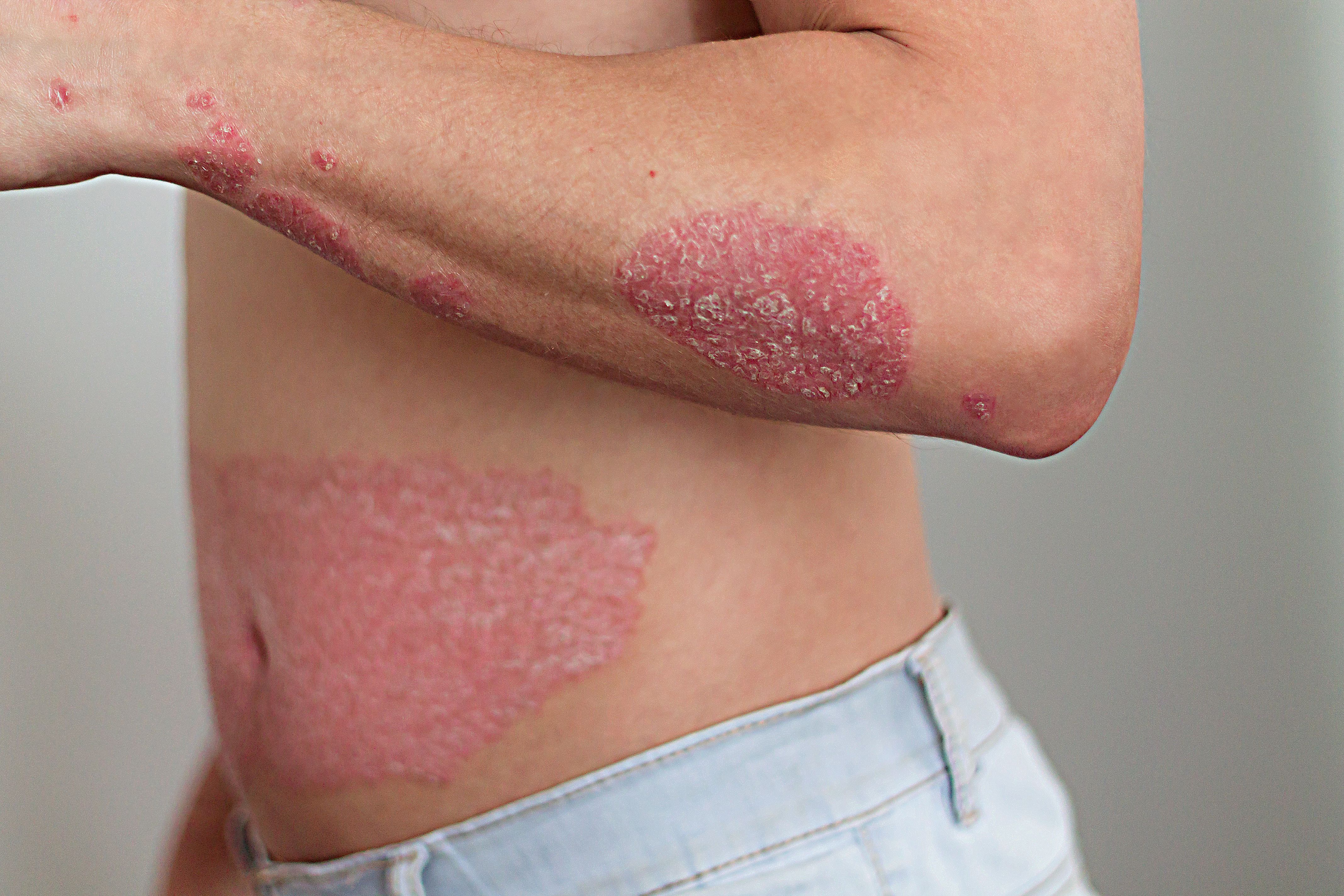- Case-Based Roundtable
- General Dermatology
- Eczema
- Chronic Hand Eczema
- Alopecia
- Aesthetics
- Vitiligo
- COVID-19
- Actinic Keratosis
- Precision Medicine and Biologics
- Rare Disease
- Wound Care
- Rosacea
- Psoriasis
- Psoriatic Arthritis
- Atopic Dermatitis
- Melasma
- NP and PA
- Skin Cancer
- Hidradenitis Suppurativa
- Drug Watch
- Pigmentary Disorders
- Acne
- Pediatric Dermatology
- Practice Management
- Prurigo Nodularis
- Buy-and-Bill
News
Article
The Crucial Link Between Psoriasis and Cardiovascular Health
Author(s):
Joel Gelfand, MD, explained how body surface area on patients with psoriasis plays a pivotal role in cardiovascular outcomes.
Recent studies led by Joel Gelfand, MD, professor of dermatology and epidemiology at the University of Pennsylvania Perelman School of Medicine, shed light on the impact of psoriasis on cardiovascular health. According to Gelfand’s Masterclasses in Dermatology session “Prevention of Major Cardiovascular Events in Psoriasis,” patients with psoriasis face a heightened risk of major cardiovascular events, mortality, and the development of diabetes, with body surface area playing a pivotal role in driving these outcomes.1
Joel Gelfand, MD

“That's a really important reminder to clinicians when that person walks in the officewith psoriasis, you knowthey have a higher risk of having some serious health outcomes occur to them,” he told Dermatology Times.
Gelfand emphasized the importance of recognizing the elevated risks associated with psoriasis.The American Academy of Dermatology's guidelines stress the need for educating individuals with psoriasis about potential risks, including cardiovascular disease, diabetes, and metabolic syndrome.2
He also acknowledged the challenges in implementing these guidelines. Many psoriasis patients primarily see dermatologists, leading to a gap in necessary screenings for cardiovascular health. A study published in the Journal of Investigative Dermatology, analyzing CDC data in the US, revealed alarming statistics. For 40-year-olds seeing dermatologists for psoriasis, less than 3% had their cholesterol checked, and less than 10% had their blood pressure checked.3
“The problem is that patients are busy,” Gelfand explained. “They don't want to go to the doctor and pay additional copays. If we don't institute those screenings, they are unlikely to happen."
To address this gap in care, Gelfand and his team are developing and testing a novel centralized care coordination service in collaboration with the National Psoriasis Foundation. The CP3 study aims to bridge the communication between dermatologists and primary care providers, ensuring that essential screenings for diabetes, blood pressure, and cholesterol are conducted promptly.
Gelfand noted, “There's just too many patients who are walking out of the office with undiagnosed, untreated hypertension, hypercholesterolemia, and diabetes that can be life-threatening for them.”
The unique approach involves a care coordinator, a shared virtual service provided by the National Psoriasis Foundation. Dermatologists educate patients and, if necessary, refer them to the care coordinator. This professional spends time explaining the connection between skin disease and cardiovascular risk, offering advice on a healthy lifestyle, diet, and exercise. Crucially, the care coordinator communicates findings back to both the dermatologist and the patient's primary care provider, ensuring a comprehensive loop of care.
Gelfand stressed that the key to addressing cardiovascular risk in psoriasis patients lies in comprehensive care and collaboration between dermatologists and primary care providers. By integrating screenings into routine dermatological care, clinicians can make a significant impact on patients' well-being without imposing additional burdens.
Furthermore, Gelfand addressed the preventive measures for younger psoriasis patients. He underscored the importance of screening for cardiovascular risk factors, including dyslipidemia and hypertension, even in pediatric cases. Education on therapeutic lifestyle choices, such as a healthy diet, regular exercise, and avoidance of smoking, becomes crucial in managing risks from a young age.
In conclusion, Gelfand advocates for a holistic approach to psoriasis care that extends beyond skin management. By prioritizing cardiovascular screenings and preventive measures, clinicians can significantly reduce the risk of major cardiovascular events in patients with psoriasis. His ongoing research, particularly the CP3 study, aims to bridge the gap between clinical practice and research, advancing dermatology's understanding and treatment of psoriasis-related cardiovascular risks.
To learn more about the CP3 study and contribute to this research, interested individuals can visit the National Psoriasis Foundation's website.
“The secret of caring for the patient is caring for the patient. I don't want my patient walking out of the office with a systolic blood pressure of 190. And no one knows about it.” Gelfand concluded.
References
- Gelfand J. Prevention of Major Cardiovascular Events in Psoriasis. Presented at: Masterclasses in Dermatology February 16-19, 2024; Puerto Rico.
- Elmets CA, Korman NJ, Prater EF, et al. Joint AAD-NPF Guidelines of care for the management and treatment of psoriasis with topical therapy and alternative medicine modalities for psoriasis severity measures. J Am Acad Dermatol. 2021;84(2):432-470. doi:10.1016/j.jaad.2020.07.087
- Berna-Rico E, Abbad-Jaime de Aragon C, Garcia-Aparicio A, et al. Cardiovascular Screening Practices and Statin Prescription Habits in Patients with Psoriasis among Dermatologists, Rheumatologists and Primary Care Physicians. Acta Derm Venereol. 2023;103:adv5087. Published 2023 Mar 28. doi:10.2340/actadv.v103.5087






